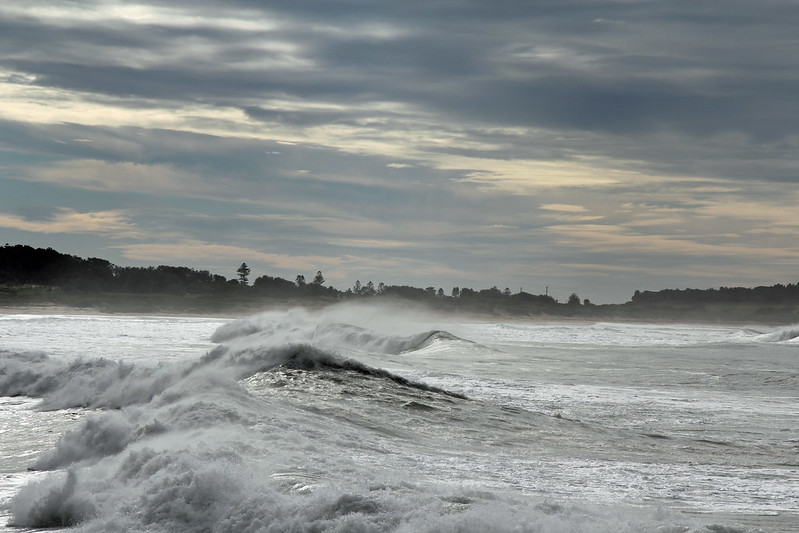It’s clear from the latest Australia State of the Environment (SoE 2021) report, released last week, that many of the pressures facing our oceans and coasts are similar. They are environments that are intimately connected. They’re also inextricably linked to human wellbeing through the important environmental services, and economic and recreational resources and value they provide.
For over 60,000 years Traditional Owners have relied on and managed these resources sustainably and, for the first time, their knowledge and perspectives are included in the SoE 2021 report.
Australian environmental and marine management is, in many respects, world leading, but without being further strengthened and integrated, the report warns, it won’t be enough to combat the cumulative pressures impacting our coasts and oceans.
CSIRO researchers take the lead
More than 50 CSIRO researchers provided contributions, expert assessments, case studies and/or peer review for the Marine chapter. This chapter was co-led by Dr Rowan Trebilco[Link will open in a new window] from CSIRO’s Coasts and Ocean Research Program; Marine Ethnoecologist and Quandamooka woman, Mibu Fischer[Link will open in a new window]; and Dr Cass Hunter[Link will open in a new window], a descendent of the Kuku Yalanji and Maluiligal nations and Indigenous Social Ecologist.
Overall, Dr Trebilco believes there’s a lot to be proud of in the way Australia manages its marine estate, and our marine science capabilities. SoE 2021 notes a number of improvements in the state of marine habitats and species as a result of better management approaches and better science. Significant improvements in monitoring have also enabled assessment of species and habitats that weren’t assessable before, and tracking of environmental status has improved.
But we need to be doing more.
Our inshore environments, particularly reefs and coasts, are generally in poorer condition, with many suffering widespread degradation as a result of pollution, human population and development pressures. But the overarching pressure on both coasts and oceans, outpacing all others, is climate change.
Climate change impacts increasing
Climate change is affecting fundamental aspects of our marine environment such as water temperature and salinity, acidity, nutrient cycling and food webs, and threatening already-stressed coastal ecosystems such as mangroves and reefs through marine heatwaves, sea level rise, severe storms and storm surges. Compounding the problem is a lack of data on cumulative effects.
Without concerted effort and action to strengthen Australia’s environmental and marine management, and to meet our international commitments in addressing climate change, Dr Trebilco believes our current approach won’t be enough to reverse the cumulative impacts of climate change and other pressures or make local actions meaningful and effective.
“One of the inescapable messages is that we need to get a handle on climate change.”

Improving outcomes
While SoE 2021 contains some very sobering warnings for our coastal and marine environments there’s also cause for cautious optimism, if we act now.
“It essentially boils down to better integration and coordination across sectors and jurisdictions”, said Dr Trebilco.
While the assessment and management of individual sectors and jurisdictions is well coordinated, he believes there’s a lack of national coordination and understanding of interdependencies and interrelations.
“We know what needs to be done. The thing is actually now doing it, which takes both the will and resourcing to enable it. Particularly given our window of opportunity to act, even in ecosystems that are currently in a ‘good’ and/or ‘stable’ state, is closing.”
Case studies in the SoE Marine chapter, including one summarising recent reports from National Marine Science Committee working groups on developing national integrated ecosystem assessments and an integrated baseline and monitoring system, provide part of the roadmap. In terms of immediate action, Dr Trebilco believes rolling-out the recommendations from these reports would be a great place to start.
“The other important part is incorporating Traditional Owners’ knowledge in the SoE”, said Dr Trebilco.
“We may have been studying Dr Trebilco believes it’s the sort of integrated thinking we need in accounting for ecosystem interconnections and interactions and cumulative pressures, rather than the current per sector, per pressure approach. “Because what we’re after is using the different knowledge systems to enhance and strengthen one another.” CSIRO co-authors on the Marine and Coasts chapters, Marine Ethnoecologist and Quandamooka woman, Mibu Fischer, and Dr Cass Hunter, a descendent of the Kuku Yalanji and Maluiligal nations and Indigenous Social Ecologist, had the huge task of coordinating all Indigenous contributions across the two chapters. “It was a really interesting journey but it also highlighted a lot of challenges in weaving Indigenous knowledge and science with western science, documenting different world views and different ways of viewing our landscapes”, said Ms Fischer. “Indigenous in-depth knowledge of Sea Country
Workshops or ‘yarning circles’ (held online due to COVID restrictions) were important in developing case studies, and documenting community observations and views about the state of their marine and coastal environments. In most cases, those views were very much aligned with western academic assessments about declining systems. Sometimes, however, they were in total contrast, a finding that Ms Fischer believes highlights one of the most important benefits of including Indigenous authors and perspectives in SoE 2021. “It has the ability to challenge the western science perception of Indigenous knowledge and to make its inclusion more commonplace”, said Ms Fischer. “Hopefully that leads to empowerment of Indigenous communities to be more involved in the next round of SoE reporting and other collaborative research. If Indigenous world views and culture were the norm, then the way society in general views our use of marine and coastal resources would be very different, and that would have a profound impact on management of those resources."Indigenous knowledge and perspectives included for the first time
